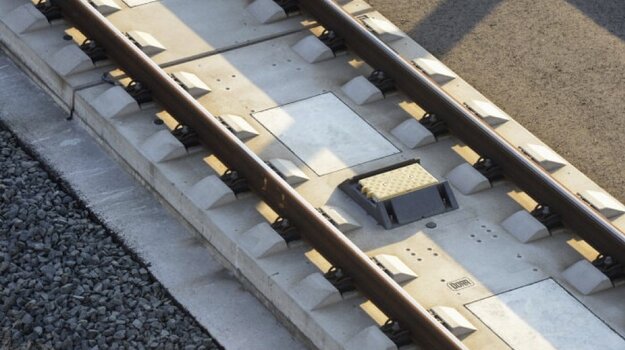Digital Interlocking (DSTW)
As an integrative system with its standardised interfaces, the digital interlocking (DSTW) in combination with the standardized integrated control and operating system (iLBS) becomes the heart of digital signalling technology (DLST).With the new generation of control and safety technology - digital control and safety technology - DB Netz AG is providing a technical solution to equip the entire network with a uniform platform. Digital signalling technology consists of the following core systems and projects: the digital signalling technology (DSTW), "European Train Control System (ETCS)" and the integrated control and operating system (iLBS)".
The digital signalling technology (DSTW) is a further development of the electronic signalling technology (ESTW) and is controlled via a new operating system within the framework of the digital signalling technology. Digital signalling technology replaces the many different types of signal boxes of various designs and generations. In contrast to the ESTW, a DSTW transmits the control commands digitally via fibre optic cable to points and signals. The separation of energy and data as well as an improved diagnostic capability is achieved.
Digital signalling technology transmits the command for switches from a greater distance (via fibre optics) and enables standardised interfaces as well as condition-based maintenance. Since the standardised interfaces of the digital signalling technology are open and implemented on the basis of standardised Internet protocols (IP-based), components from different manufacturers can be interconnected to form an overall system. DB Netz AG thus also enables competition for diverse technical solutions from individual manufacturers. This leads overall to more quality and economic efficiency of the control and safety technology - an essential and important contribution to Digitale Schiene Deutschland.
The components of a DSTW
The digital signalling technology consists of individual, clearly specified subsystems - sometimes also called components - (central unit, signals, switches, etc.), which are interconnected via standardised interfaces (Standard Communication Interfaces - SCI). These open, IP-based interfaces enable the interconnection of components from different manufacturers in one system. The function-oriented specification on the part of DB Netz AG enables competition between the various technical solutions of individual manufacturers for the realisation of the components.
Railway IP network (bbIP)
The electronic interlockings (ESTW) that have been in use for several decades use conventional switching technology. Until now, the commands from the central unit were sent via large bundles of copper cables to the individual control elements such as switches, signals and level crossings.
In the future, with the help of the new generation of signal boxes, the digital signalling technology ( DSTW), control commands will be transmitted via IP networks. The advantage is a significantly higher control distance due to the connection via IP data line. With digital signalling technology, a large part of the signal cables from the signal box to the field elements of the control and safety technology is eliminated. Standardised IP interfaces also enable a modular design of the signal box and the equipment with modern standard components of the industry, which ultimately leads to potential savings.
What is bbIP ?
The "railway operational IP" project, bbIP for short, is a development project and part of the Digital Control and Safety Technology programme and provides a modern, high-availability IP platform for data transmission for railway operational purposes, starting with exclusive IP networks for the pre-series projects .
The tasks of bbIP are:
-
Set up exclusive IP-based networks with standardised interfaces for the pre-production run and starter set DSTW construction projects on time.
-
Provide exclusive IP networks for the DSTW programme, with central IP network management to ensure the required high network availability (99.99921%) .
-
Ensure that after completion of the pilot phase, a rollout can also be implemented for other railway applications.
The DLST requirements for an IP network
The bbIP network is used to exchange control data between the central units of the digital signalling technology and the control elements (switches, signals, etc.).) are exchanged. bbIP fulfils the following requirements of the DLST:
-
High network availability
-
High network stability
-
Short end-to-end transit times
-
High safety standards
-
Standardised interfaces
-
Usability for different DLST applications
-
Scalability (for large-scale rollout to connect up to 130 . 000 actuators)
-
Cost efficiency, especially efficient operation

